Whether you’re a seasoned national park traveler or just planning your first vacation to our nation’s most precious gems, you know that every park has its “go-to” spots that you can’t miss. Old Faithful in Yellowstone, Cades Cove of Great Smoky, Bridalveil Fall in Yosemite – the list of these iconic wonders goes on and on. Though these attractions are must-sees, due to their popularity they often don’t deliver fully what we came here for - silence, solitude, and serenity. If you’re looking to really get away from the parking lots and crowds, this list should get you going in the right direction for the perfect and peaceful backcountry getaway.
1. Glacier National Park – Apikuni Falls
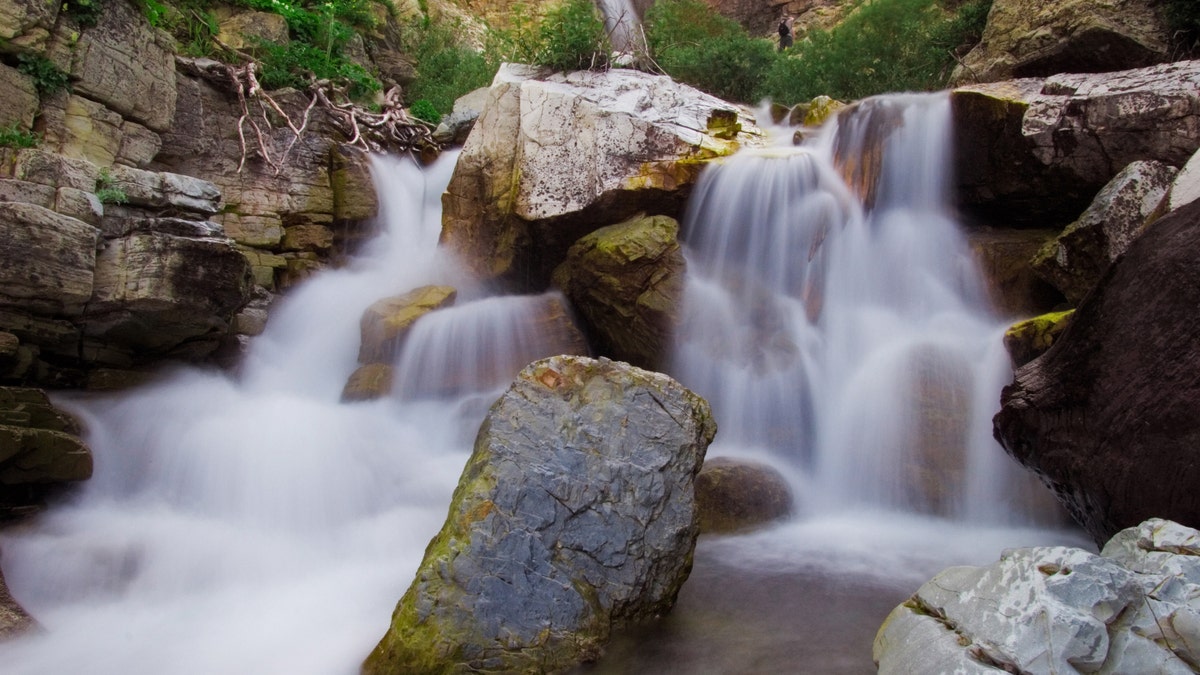
(Swamy Lokanadham)
Glacier National Park, often referred to as the jewel of the national park system, displays a rare beauty of the kind you only see in nature’s purest form. With only one highway cutting across its wild interior, the iconic Going-to-the-Sun Road draws visitors in, displaying a raw and unkempt beauty…from the seat of your car. Believe it or not, many tourists drive through this piece of paradise without stopping, but there’s so much more to see! Many of the trails in Glacier are not crowded when compared to other national parks, but one of my favorites is Apikuni Falls near Many Glacier. With only room for about ten cars to park, you’re not going to see the crowds of the Going-to-the-Sun Road flocking to these rather spectacular falls. Only about a one mile trek from the parking lot, you’ll still experience a workout hiking up to Apikuni because you gain a full on, lung-squeezing, blood-pumping 700 feet from bottom to top! Don’t worry, plenty of short side trails with rest stops provide views of Gem, Grinnell, and Salamander Glaciers on the way up. After some scrambling near the base of the cascade you can proudly look up at Apikuni Falls knowing that the majority of Park travelers stick to the beaten paths and bypass this special sight.
2. Grand Teton National Park - Colter Bay
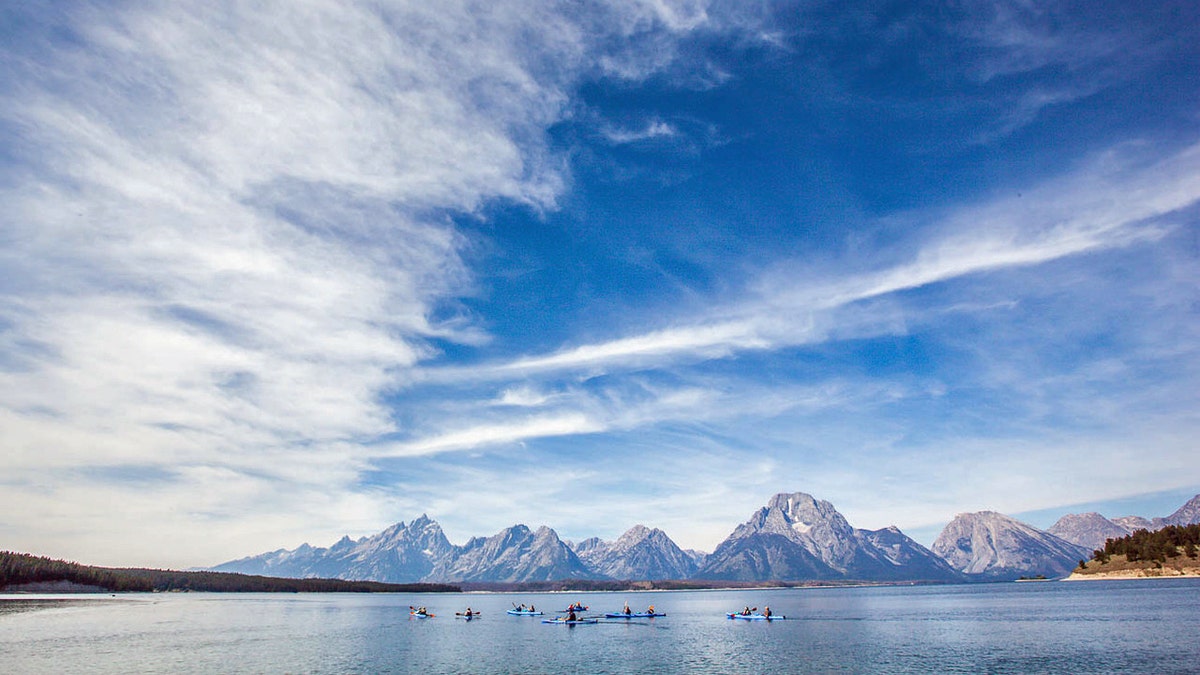
(Austin-Lehman Adventures)
Colter Bay, a calm section of water off the northeast side of Grand Teton National Park's Jackson Lake will wow you with its serenity. The best way to enjoy the isolation of this bustling area is to rent a kayak or canoe and paddle your way around the lake's edges. (Not the whole lake though, that would an ambitious undertaking!) The mountain range at the opposite end of the lake serves as an unbeatably beautiful backdrop, one that you won't believe until you see it with your own eyes. Mount Moran seemingly rises straight out of the still waters with its year round snow fields quietly reflecting off the lake's shimmering surface. As your paddle silently slices the surface, you just might spot an eagle high atop a nearby conifer or some playful otters rolling around on the rock beaches. If paddling isn't your thing, you may want to rent a motorboat and throw some trout fishing into the mix.
3. Acadia National Park – Schoodic Point

Schoodic Point - Acadia National Park (Susan Jordan Bennett)
Much of Maine’s Acadia National Park spreads across Mount Desert Island, so it may surprise you that Schoodic Peninsula, the only portion of the Park on the mainland, is one of the more secluded areas of Acadia. Schoodic Point, located at the very tip of the peninsula, puts on a show at high tide for photographers, wave watchers, and explorers alike. Steep granite walls and crashing waves collide throwing a wash of spray into the salty air, wowing those who choose to journey out to the lesser visited sections of this Park. Carefully make your way down the slippery shore staying out of the wave’s wake (a caution here: tourists have been carried out to sea). The pounding of waves on the rocks, spectacular views of Mount Desert Island, and lack of crowds make Schoodic Point a worthwhile destination for the more adventurous hiker.
4. Wind Cave National Park - Wind Cave
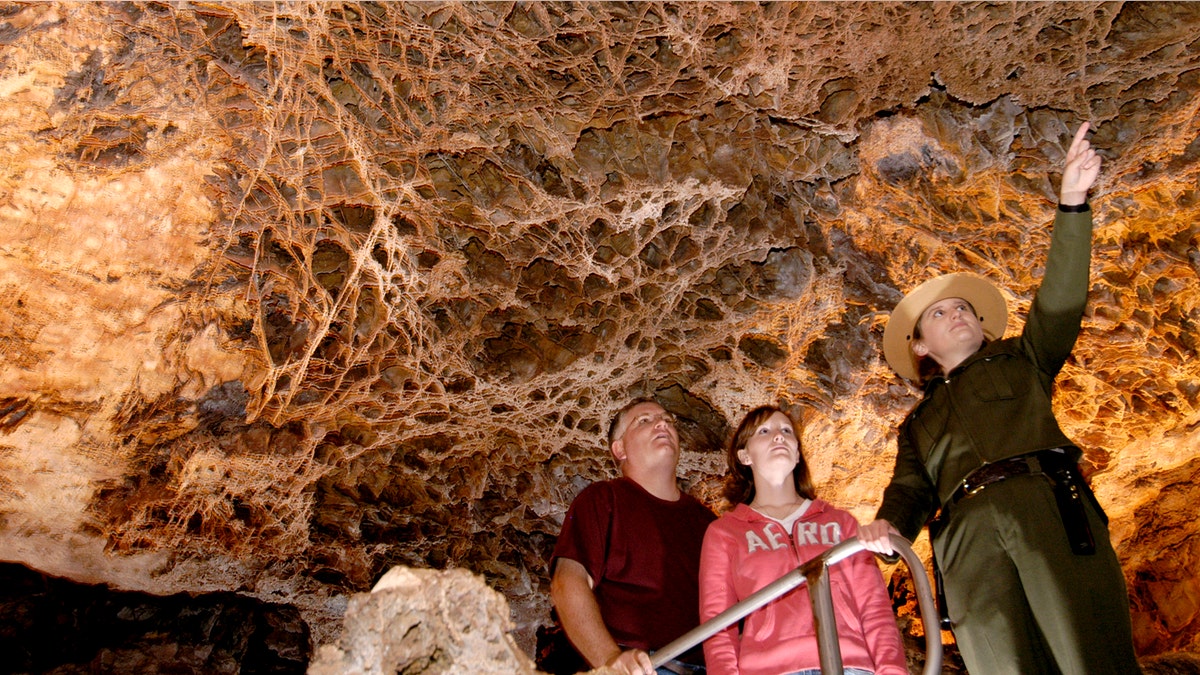
(NPS)
Driving through Wind Cave National Park, you would think that the endless sea of prairie grasses, swaying Ponderosa Pine trees, eye-popping wildflowers, and plentiful, prairie wildlife were all that existed, if you were only to check out the surface of this often overlooked national park in South Dakota. The real mysteries exist underground, in America's eighth national park and first cave to be designated with this protected status. A few minutes in the main cave chambers will give you the feel of near isolation. But, if you want to experience even a deeper awe, book a "Wild Cave Tour" in advance. You'll step and crawl your way through dimly lit passages of Wind Cave well off the main pathways, glimpsing the potato chip-like boxwork formation on the cave's ceiling and listening to stories of the discovery of Wind Cave and its colorful past. With much of its seemingly endless corridors yet to be fully explored, you'll never feel more alive than when you delve deep into the cool, silent tunnels of Wind Cave. Just be sure to bring a good flashlight!
5. Canyonlands National Park – Green River Overlook
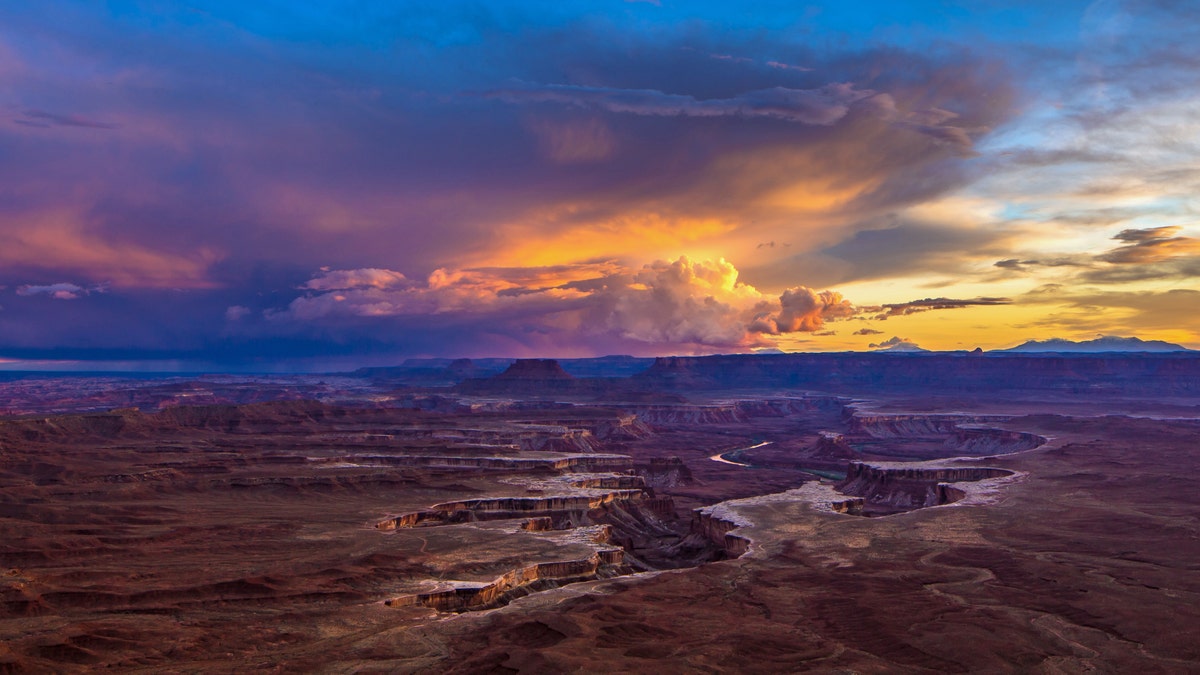
(Austin-Lehman Adventures)
If you’re looking for the most inspiring place to watch the sunset in Canyonlands National Park, look no further than the easily accessed Green River Overlook. While most of the crowds flock south to Grand View Overlook for the evening show, Green River Overlook escapes the masses and offers a panoramic vista of some of the best landscapes that Canyonlands have to offer. Looking out over the white-rimmed Green River gorge, extensive plateaus, prominent red rock buttes, and snow-covered peaks in the far distance, you can’t help but be wowed when taking in this surreal view. For an even more secluded experience, scramble down and sideways from the actual overlook to find the surrounding hidden sitting spots along the canyon walls.
6. Yosemite National Park – Artist Point
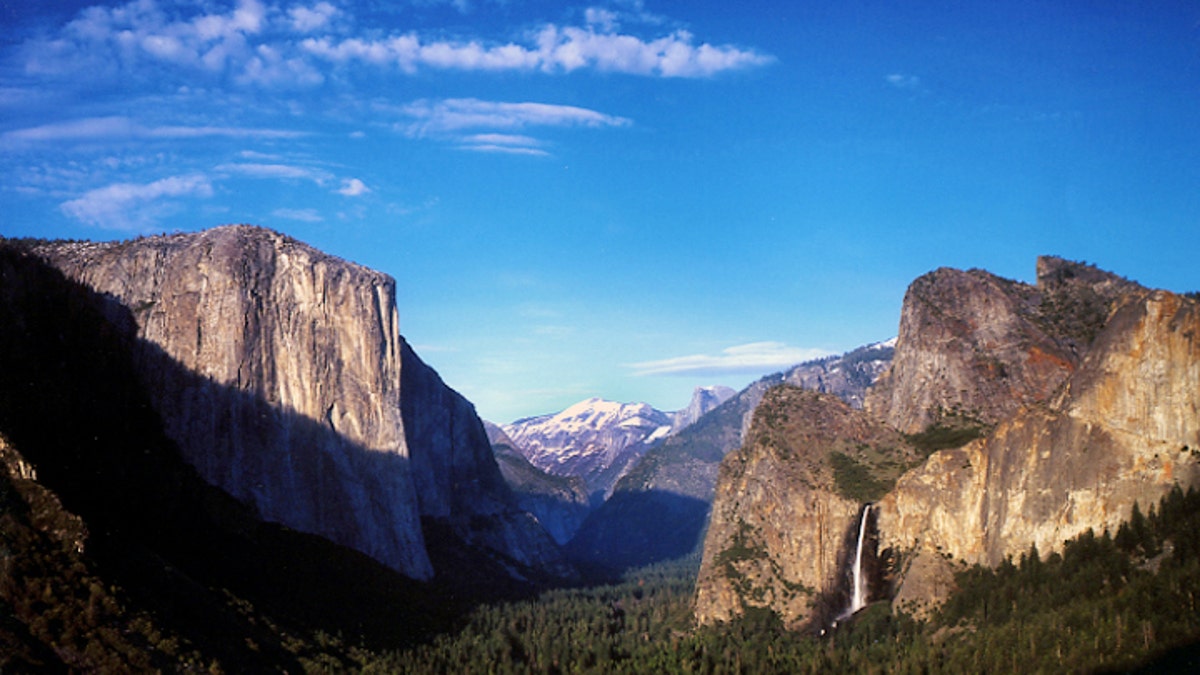
(David Okner)
Everyone’s heard of the often over-crowded park that is Yosemite, especially in mid-summer when sightseers from all over the world descend for a taste of nature. Bumper to bumper traffic, mobs of people at the “got-to-see-it” attractions, and the infamous photo bomb (when your family Christmas card snapshot focuses more on the gawking tourist behind you then your actual kin). The Yosemite Valley wins the contest for most popular section of the Park and rightfully so. Believe it or not, there are actually a few secret spots hidden from the public eye that exist within the Valley itself. You just need the advice of an insider. Affording views similar to Yosemite’s most famous panoramic vista, the Tunnel View, a little higher up and a bit to the southeast is Artist Point. Here you might have the breathtaking beauty of the Valley all to yourself. Beginning this short but steep trek requires you to turn left on an old stagecoach road a half mile into the Pohono Trail (the one that goes all the way to Glacier Point). Once you hit this road, the solitude begins…the kind of quiet where you can hear the wind whistling through the pines and the scamper of an animal or two. A short jaunt upwards brings you to Artist Point where you’ll catch sight of Half Dome, Clouds Rest, Bridalveil Meadow, Royal Arches, and the Merced River to name a few worthy icons. Due to the fact that the trail remains unmarked, the crowds haven’t found it yet…and we can only hope it remains that way.
7. Crater Lake National Park – Mount Scott Trail

(NPS)
While most of the visitors to Crater Lake National Park circle the famous Rim Drive in their vehicle or head down to the lake for a boat tour, imagine yourself taking in the whole scene from atop the highest peak in the Park! Mount Scott, a small stratovolcano, rises above the southeast portion of Crater Lake providing not only spectacular views of the unmatched azure blue of the deepest lake in the US but also panoramic views of Diamond Peak, Upper Klamath Lake, Mount Shasta, Mount Thielsen, and Diamond Lake. Yellows, pinks, purples, and blues burst in a colorful parade once the snow melts in July and forget-me-nots, buttercups, wild onions, and Indian paintbrush reach toward the sun. Although this hike may seem intimidating due to its high altitude, I deem it quite achievable due to the trail’s gradual incline over its length. To beat the crowds in Crater Lake, head up, up, and away to the highest point for a vista well worth the effort.
8. Yellowstone National Park – Wapati Trail

(Austin-Lehman Adventures)
As you can imagine, most of Yellowstone’s visitors flock to the major sights one needs to see when you tour our world’s first national park: Old Faithful, Lake Yellowstone, Mammoth Terraces, Canyon, Roosevelt Arch – mostly features you can easily access from the Park’s famous figure eight loop road. What many visitors don’t do is take the time to explore the 1,100 miles of trails in Yellowstone’s backcountry. One easy and unique path stands out above the rest, and despite its simple access and location to one of the most famous features in the Park, Artist Point overlooking the Lower Falls of the Yellowstone River, the trail is virtually deserted. Wapati Trail takes you on a short, yet satisfying journey through soft, rolling meadows, lodgepole pine forests, a “walk on the moon” through a chalky white area colored by geothermal activity, and lily pad-dotted ponds. About three-quarters of the way, a fantastic view of the Grand Canyon of Yellowstone opens up with its bright pink, orange, yellow, and red-streaked walls standing in stark contrast to the snake of a river running through its V-shaped chasm. At trail’s end, you meet the bus crowds to take in the coveted view of the Yellowstone River’s Lower Falls from Artist Point. However, you gain satisfaction from arriving here the “back way” having seen and experienced a Yellowstone that most tourists will never know.
9. Grand Canyon National Park – Elves Chasm
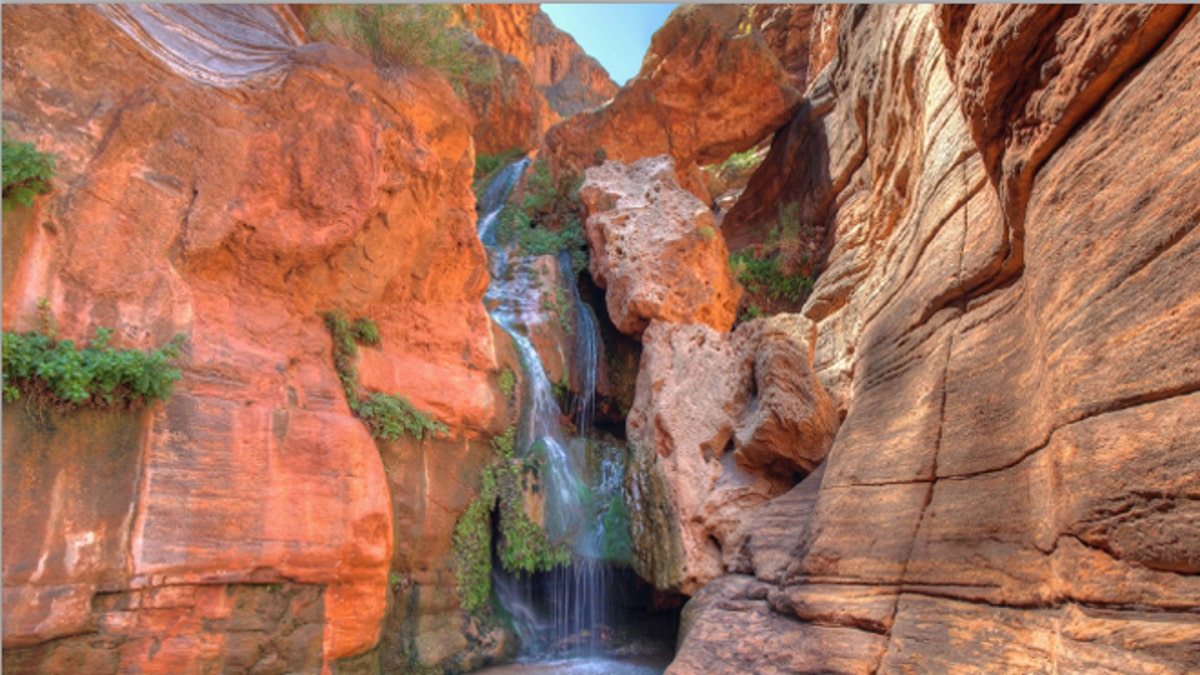
(Arizona Raft Adventures)
One of the more difficult spots to reach on our Top Ten List, Elves Chasm is a special place that can be located with the help of knowledgeable guides or an experienced boatman. To reach the Chasm, choose your route: Royal Arch Loop Trail, a multiday moderate to strenuous adventure involving hiking desert wilderness, scrambling up and down boulders, and repelling down cliff sides; or the Colorado River raft route, in which you make the trip to Elves Chasm via a side excursion off the Colorado’s main channel. However you decide to arrive to Elves Chasm, you won’t be disappointed when you “happen” upon this oasis in the desert. A delicate waterfall appears seemingly out of nowhere falling softly into a deep blue-green pool at the base of a narrow red rock canyon. The greenery surrounding the waterfall pulls together the scene providing striking colors and a literally jaw-dropping setting, a photographer’s dream. For the brave, carefully climb up the slippery rocks behind the falls to leap out over the cascade for a drop into the deep pool below. Ahh, now this is true paradise.
10. Great Smoky Mountains National Park – Walker Sisters’ Cabin

(Kent Cave)
In our nation’s most visited national park, it may seem impossible to find respite from the crowds touring and snapping photos in Cades Cove, Cataloochee, or Clingmans Dome. While it’s essential to see these tourist attractions, we can’t help but yearn for something a little more, something away from the public’s eye. Near the northern border of the Park lies a unique piece of history begging for discovery, the Walker Sisters’ Cabin. Located in a narrow valley, past the Greenbriar School on a one way gravel road, you’ll walk the remaining mile to this homestead steeped in history. The five Walker Sisters lived and worked off their land in the traditional way, even after the government moved in to purchase surrounding property for the purpose of establishing a national park. Instead of selling their property for a price, the Walker Sisters agreed to sell the land in exchange for lifelong leasehold on the cabin. When the last Walker Sister died in 1964, the National Park Service chose to embrace the homestead’s history and the testament to the pioneer spirit upon which our country was built by choosing to leave the cabin as it once stood. Most of the furnishings and personal belongings of the sisters were purchased by the Great Smoky Mountain Natural History Association and are stored away from the home site.
Kasey Austin is the field operations liaison at the adventure travel company, Austin-Lehman Adventures.
